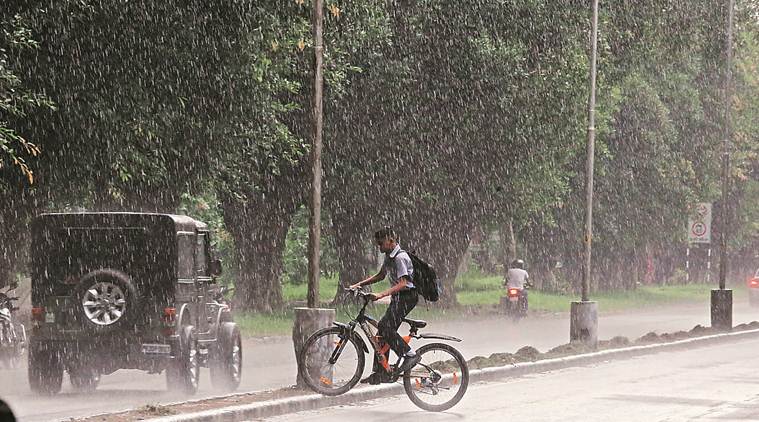
THE AIR Quality Index (AQI) in Chandigarh reached the “very good” mark with a recording of 10 at 11 am on Monday, making it arguably the cleanest hour in the city in the last one year. Experts attribute it to the heavy rain accompanied by strong winds in the last two days. It could also have something to do with the sparse traffic on the city roads during that hour, for by the evening the AQI had gone up to 58.
The City Beautiful, which prides itself on its heavy green cover, has been suffering from poor to very poor air quality due to a combination of factors, including the growing vehicular population — the city has the highest per capita density of vehicles at 878 wheels per 1000 people —construction work on the outskirts, and the periodic burning of crop residue by farmers in the neighbouring states.
In India, a reading of 0-50 is considered good, 51-100 satisfactory, 101-200 moderately polluted and unhealthy for sensitive populations such as the elderly and kids, 151-200 unhealthy or poor, 201-300 very unhealthy/poor and above 300 is hazardous.
On Sunday, Chandigarh recorded an AQI of 23 (good) at Punjab Engineering College, 58 (satisfactory) at Industrial Area, 27 (good) at Kaimbwala, 41 (good) at IMTECH, Sector 39, and 40 (good) at Sector 17.
A senior officer with the Chandigarh Pollution Control Committee (CPCC) said, “Rain helps settle the widespread dust in the air and on other objects. Besides, during summers, AQI is better than the winters when dust particulates cannot go out of earth surface because of the low temperature and high air pressure, which slows down the velocity of the winds.’’
CPCC has installed sensors to check AQI at six locations — Sector 50, Kaimbwala village, IMTECH Sector 39, Phase-1 Industrial Area, Punjab Engineering College (PEC) and Sector 17-C.
According to the records, in December 2018, Industrial Area had an AQI of 326 (hazardous). It hovered around 300 during January as well, putting residents at risk of asthma and other diseases.
Dr D Behera, senior professor with PGIMER Pulmonary Medicines Department, said, “The bad AQI invites serious respiratory diseases, including asthma, lung infection and lung cancer. The usual face masks are not sufficient to prevent the diseases caused due to polluting atmosphere. This month the Air Quality Index has been quite good and it is ideal for people wanting to go in for outdoor activities.”
Debendra Dalai, vice-chairman of CPCC, said, “Besides lower suspended particulate matter, the level of SO2 (sulphur dioxide) has also fallen in Chandigarh since January. Heavy rain is the main reason behind this change.”